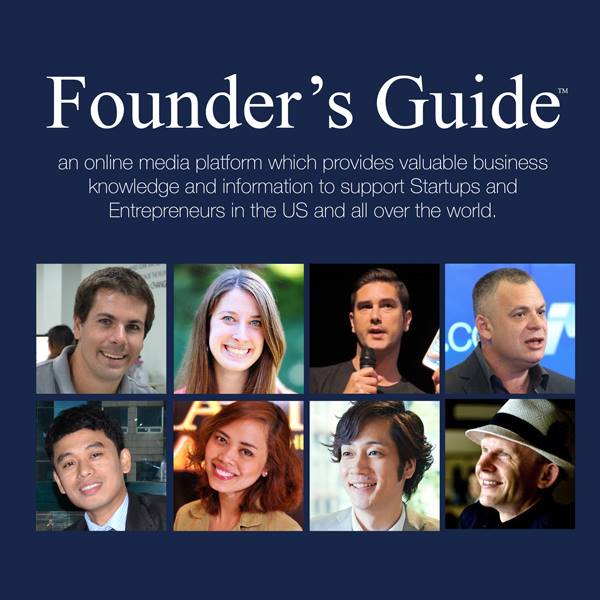Imagine an operating theatre mid-procedure, where the nursing team quietly files out, leaving the surgeon alone. This unsettling image highlights the critical importance of endurance among frontline professionals. It’s the kind of scene that would make anyone’s stomach drop, because when those we rely on to save lives begin to exit en masse, the repercussions extend far beyond empty job slots, threatening the very fabric of healthcare delivery.
We trace how individuals can marshal mental grit, how crises can ignite creative breakthroughs, how technology can be integrated with care, and how mission-driven cultures bind these elements together. These interlocking forces are essential for sustaining excellence in high-pressure environments. The alternative, that empty theatre, shows us exactly what’s at stake when endurance fails.
If we want to avoid that silent operating room, we need to unpack the building blocks of long-term grit – the mental, creative, technological and cultural forces that actually keep people standing when the pressure won’t let up.

Building Endurance
What separates those who thrive under relentless pressure from those who burn out? It’s not just talent or luck. True longevity in high-stakes fields comes from four core elements: psychological capital, crisis-driven innovation, evidence-based technology adoption, and a unified sense of purpose. Together, they create what we’ll call an ‘endurance advantage’.
This advantage isn’t theoretical.
Turnover data reveals the brutal reality facing professionals today. New burnout research shows the psychological toll. But there’s hope in the data, too. Insights into crisis creativity show how pressure can spark innovation rather than destroy it. Culture alignment research points to concrete ways organisations can build resilience rather than just talk about it.
We examine real examples from neurosurgery and corporate leadership. These aren’t feel-good stories. They’re practical demonstrations of how these principles actually work when everything’s on the line.
Let’s see how far we are from that ideal – the numbers on turnover and burnout make clear the price we pay when endurance falls short.
The Cost of Attrition
Recent turnover rates in healthcare show just how dangerous endurance failure can be. In 2024, US nurse turnover hit 18.4 per cent, physician turnover 13 per cent and hospital turnover 20.7 per cent, each figure more of a distress signal than a routine career shift. The World Health Organisation (WHO) predicts an 11 million-worker shortfall by 2030.
Australia and health systems around the globe are under the same strain. Staffing gaps force protocol shortcuts. Patient wait times stretch longer. Error rates climb.
Sure, some attrition happens naturally as careers progress. But the current scale points to something deeper. Systemic burnout now threatens patient safety and care quality directly.
Faced with those alarming trends, where can individuals look for the mental armour to stay in the fight?
Building Resilience
To tackle this widespread burnout, we need to grasp what actually builds individual resilience from within. The study ‘Psychological Capital Mitigates Nurse Manager Burnout’ breaks down the key components. Self-efficacy means believing you can handle whatever comes your way and adjusting your response accordingly. Hope involves setting goals, finding ways to reach them, and keeping your motivation alive. Resilience is your ability to bounce back when things go wrong. Optimism means you tend to credit good outcomes to your own stable, internal qualities. The research found that this positive mental state acts as a buffer against job pressures, transforming stress into better performance and deeper work engagement.
Think of these traits as psychological shock absorbers.
They help people spring back from the relentless pressure of demanding workdays. Professionals can keep performing well even when they’re facing serious challenges.
But here’s the catch. Without backing from the organisation, even the strongest inner resources will eventually wear thin under constant overwork. You’ve got to build an environment that actually supports these mental skills if you want resilience that lasts.
And when you’ve strengthened that inner armour, you often unlock a surprising side-effect: pressure-sparked ingenuity.
Creativity in Crisis
In high-pressure environments like healthcare, crisis-driven creativity emerges when urgent situations force teams to improvise under severe time constraints. There’s something almost perverse about how well people think when everything’s falling apart. Necessity doesn’t just breed invention. It breeds brilliant invention.
This dynamic appears in financial management too, where high-stakes decisions under uncertainty demand adaptive problem-solving.
Andrew Harding, FCMA, CGMA, Chief Executive of Management Accounting at the Association of International Certified Professional Accountants, noted, “There is nothing like a crisis to see people be creative.”
That insight on crisis-driven innovation reflects how emergency department staff repurpose equipment and devise workaround protocols on the fly during medical emergencies.
But here’s the problem. Once the immediate crisis passes, these innovations can dissolve without formal review. Organisations need deliberate processes to capture and codify these spur-of-the-moment solutions into standard practice.
Turning Breakthroughs into Practice
Systematic after-action reviews and evidence-driven vetting turn one-off fixes into enduring protocols. You can’t just hope good ideas stick around. Tools like cross-disciplinary debriefs, pilot studies and outcome tracking turn good ideas into lasting protocols.
Codified lessons cut learning curves for new staff. They create feedback loops that keep pushing improvements forward. This way, valuable innovations don’t just disappear when people move on.
How do organisations actually embed these lessons? Through targeted technology integration.
When you formalise innovation, you’re building resilience and adaptability into your systems. That codification is exactly what elevates one-off fixes into the step-by-step discipline surgeons rely on when stakes are life and death.
Precision and Persistence
In high-stakes medical environments, keeping your hands steady when everything’s on the line isn’t just about skill. It’s about strategic planning and smart tech integration.
You need rigorous preoperative assessments. You need advanced surgical techniques. Without both, patient safety becomes a gamble rather than a guarantee.
Take Dr Timothy Steel, a consultant neurosurgeon in Sydney. From 1998 to 2025, he’s worked at St Vincent’s Private and Public Hospitals. His track record? Over 2,000 cranial operations, 8,000 minimally invasive spinal procedures and 2,000 complex spinal reconstructions.
He works with advanced imaging studies and thorough risk assessments to create tailored surgical plans for each patient. Steel only adopts minimally invasive, image-guided techniques after reviewing clinical evidence for safety and efficacy. His focus is on addressing complications and reducing procedure times. Those numbers – 12,000 procedures over nearly three decades – translate to roughly one surgery every other working day. That puts the phrase ‘steady hands’ in perspective.
This disciplined planning and cautious tech adoption show how medical professionals can build endurance in demanding environments.
Just when you think steady hands and smart tools are enough, new rules and the court of public opinion add a fresh level of intensity.
Navigating Regulatory Pressures
New compliance frameworks and public scrutiny make workforce resilience a board-level concern. These turnover rates highlight the healthcare sector’s challenges amid burnout issues.
Healthcare providers now face mandatory staff-wellbeing programs from accreditation bodies. If these programs fail to deliver results, reputational damage follows quickly.
Public trust erodes fast when care institutions can’t keep their workforce stable.
External pressures keep mounting. Culture becomes the critical factor that determines whether organisations survive or crumble. They’ve got to prioritise resilience to maintain their reputation and meet regulatory demands.
One of the most potent counters to those external squeezes is a purpose that binds everyone to the same north star.
Purpose-Driven Culture
Purpose-driven culture aligns healthcare teams around a shared mission. It helps individuals withstand pressure and maintain focus on patient outcomes.
You’ll see similar alignment principles in organisational culture within finance.
Dionne Corradine, Chief Strategy Officer at the City of London Corporation, observed, “If you have leaders where the culture is about everyone pulling in the same direction and everyone is clear on how they are contributing to the overarching objectives, then you’ve got more of a chance at achieving short-term survival as well as that long-term growth.”
That emphasis on unified objectives shows how clear cultural direction builds resilience and cohesion in medical teams. They can respond to crises with coordinated action.
Psychological safety matters here, creating trust that frees teams to focus on high-stakes tasks. Role clarity cuts down on second-guessing. This environment builds trust and collaboration.
But there’s a catch. Over-alignment risks stifling autonomy – balance is key. What works: cross-unit forums where frontline feedback loops back to leadership, reinforcing both alignment and adaptability.
The challenge then becomes: how do you weave that shared mission into the fabric of an entire organisation?
Scaling Endurance
In large organisations, sustaining endurance means weaving technology into strategic leadership. You’re building resilience that can weather whatever comes next.
This approach uses data analytics and inclusive practices to sharpen decision-making. It keeps companies agile when markets shift.
Joaquin Duato shows how this works as Chairman and CEO of Johnson & Johnson. Armed with degrees from ESADE Barcelona and Thunderbird, he’s navigated twelve roles in R&D, operations and global strategy over his 35 years at the company.
Under his leadership, Johnson & Johnson generated US$88.8 billion in sales in 2024. The company works on integrating technology and data analytics to reduce the risks of innovation and accelerate safe product rollouts, while fostering a culture that puts people first and mirrors patient diversity.
These moves reveal how strategic leadership sustains excellence when the pressure’s on.
All these pieces – mental grit, crisis innovation, tech and culture – only become unstoppable when they’re pulsing in sync.
Synchronising for Strength
When you sync psychological capital, crisis innovation, technology integration, and purpose-driven culture, something interesting happens. Vulnerability transforms into lasting strength. Your entire team stays engaged throughout the process, which means continuity and effectiveness don’t just survive – they thrive.
Every component needs to work together under pressure. Mental grit, creative solutions, technological advances, and cultural alignment can’t operate in isolation. Organisations must identify which areas need fine-tuning to boost their overall endurance.
The alternative? We’re back to that empty operating theatre.
A space where expertise once thrived, now silent except for the hum of unused equipment. Look, endurance isn’t just about surviving the pressure. It’s about creating systems robust enough that when the next crisis hits, nobody walks out.
So, what will you put in place before the next crisis hits – and ensure nobody walks out when it counts?











